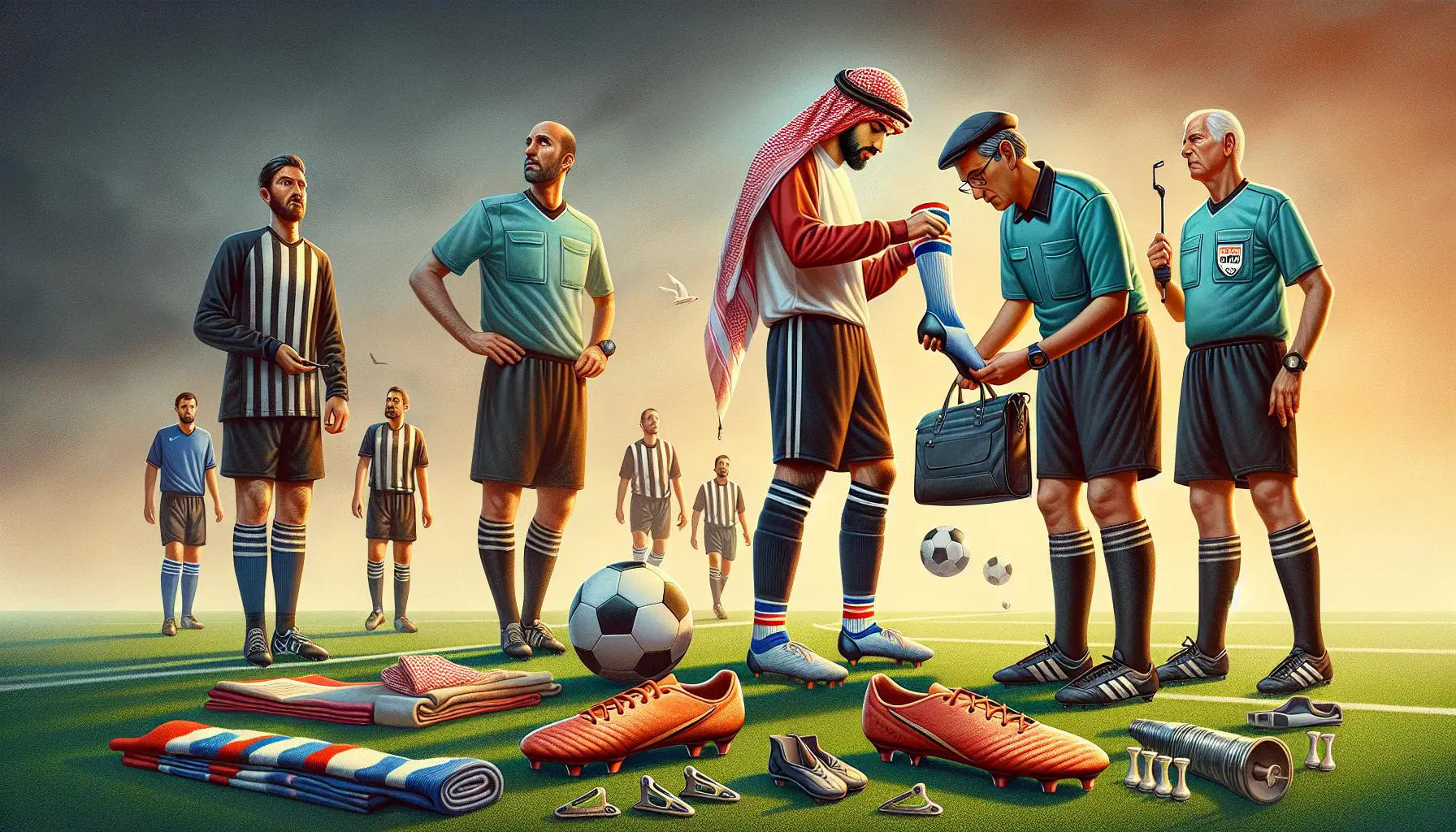In the heat of the game, when adrenaline’s pumping and spirits are high, the last thing anyone wants is for damaged equipment to throw a wrench in the works. Whether it’s a cracked bat in baseball, a snapped tennis racket, or a deflated soccer ball, knowing the rules for replacing these items is crucial. It’s not just about keeping the game fair; it’s about maintaining the flow and ensuring everyone’s having a good time.
Different sports have their own sets of rules and protocols for when and how equipment can be replaced during play. These guidelines are designed to minimize disruptions and keep the game moving smoothly. From the sidelines to the field, understanding these rules can make a big difference in how players and coaches react to equipment mishaps. Let’s dive into the specifics and shed some light on how these situations are handled across various sports.
Importance of Knowing Equipment Replacement Rules
In the heat of competition, equipment failure is an inevitable part of sports. It could range from a cracked bat in baseball, a punctured soccer ball, to a broken string on a tennis racket. Knowing the rules for replacing such damaged items is not just a matter of procedural formality; it’s a crucial aspect of maintaining the game’s integrity and competitive balance. Players and coaches equipped with this knowledge are better prepared to act swiftly and appropriately, ensuring the game continues with minimal disruption.
Specific regulations govern equipment replacement across different sports, established to ensure fairness and continuity. For instance, football has clear guidelines for when and how a damaged helmet can be replaced. Tennis, similarly, allows players to switch rackets when a string breaks, but this comes with conditions that must be adhered to, to prevent any undue advantage. These rules, while seemingly minor, can have significant implications for the game’s flow and outcome.
Moreover, the psychological impact of equipment failure on players cannot be understated. Athletes often become accustomed to their gear, developing a sense of comfort and confidence in their performance. An unexpected equipment malfunction can throw off their game, affecting focus and performance. Knowledge of replacement rules can mitigate these effects by providing a quick resolution, helping players regain their composure and re-focus on the competition.
Understanding equipment replacement rules also has strategic implications. Coaches and players can use this knowledge to their advantage, making decisions that could potentially sway the course of the game. For instance, a timely equipment change, within the bounds of the rules, could be used to break an opponent’s momentum or to allow a player a moment to regroup.
The importance of education on these rules cannot be overstated. Training sessions, workshops, and team meetings often include discussions on equipment replacement policies, ensuring everyone involved is on the same page. This preparation is key to avoiding unnecessary penalties or delays that could affect the game’s outcome.
| Sport | Equipment Replacement Rule |
|---|---|
| Baseball | Broken bats can be replaced at any time. |
| Soccer | A punctured ball must be replaced immediately, game to restart with a drop-ball. |
| Tennis | Players can replace a racket due to breakage but cannot unduly delay the game. |
| Football (NFL) |
Baseball Equipment Replacement Guidelines

In baseball, precise rules govern the replacement of equipment during play to ensure the game maintains its pace and integrity. Unlike some other sports, baseball equipment can have a significant impact on the performance of players and the outcome of the game. For example, a cracked bat is not just a safety hazard but could also affect the player’s ability to hit the ball effectively.
Major League Baseball (MLB), the pinnacle of professional baseball, has detailed guidelines on what constitutes damaged equipment and how it should be replaced during a game. These rules are essential for both players and coaches to understand, as they can influence strategic decisions during critical moments.
One of the most common scenarios involves the replacement of a broken bat. If a player’s bat breaks during an at-bat, they are allowed to replace the bat without penalty. However, there are specific conditions under which this replacement can occur:
- The bat must break as a result of contact with the ball.
- The replacement bat must meet all regulations set by the league.
- The player is not allowed to delay the game unnecessarily while choosing a new bat.
Another area of concern is the catcher’s gear. Given its crucial role in player safety, any damaged catcher’s equipment must be replaced immediately. This includes masks, chest protectors, and shin guards. The replacement process is straightforward but must be done quickly to minimize game delays. The umpire plays a key role in ensuring that the equipment meets safety standards before play resumes.
Pitchers are also subject to equipment guidelines, specifically regarding their gloves. A pitcher’s glove cannot have any white or light-colored markings that might distract the batter. If an umpire deems a glove to be in violation of these rules, the pitcher must replace it with a compliant one before they can continue.
- Broken bats can be replaced if broken during an at-bat, provided the new bat adheres to league specifications.
- Catcher’s equipment that is damaged must be replaced immediately to ensure player safety. This replacement should occur with minimal game delay.
- Pitchers must use gloves that meet league color regulations to avoid distracting batters. Non-compliant gloves must be replaced.
Tennis Equipment Replacement Rules

Just like in baseball, tennis has its set of rules for replacing equipment during play, ensuring the game runs smoothly and safely. In tennis, the most common pieces of equipment that may need replacement or repair during a match include racquets and strings, as well as attire and shoes. Understanding these rules is vital for both players and coaches to avoid any disruption during the game.
When it comes to racquet replacement, players are allowed to switch their racquets during a match if they break. However, this can only be done during a changeover or set break. If a racquet breaks during play, the player must wait until the point is over to replace it. Notably, the replacement must occur without causing an unreasonable delay in the match, emphasizing the sport’s continuous flow.
String issues follow a similar protocol. If a player breaks a string, they can replace the racquet with another, assuming no game delay. This rule highlights the balance between maintaining equipment integrity and the match’s pace. Players often come prepared with multiple racquets to ensure they can quickly switch without halting the game.
For Wardrobe Malfunctions, the rules are slightly more flexible. If a player’s attire becomes unusable or falls out of compliance with the dress code (such as a broken shoe lace or a torn shirt), they’re permitted to replace or repair the item. Yet, similar to racquet replacement, this should be done during a changeover and must not excessively delay the play. Players are encouraged to have spare attire ready to minimize disruption.
The International Tennis Federation (ITF) governs these regulations, stressing the principle that players should not gain an unfair advantage or unduly delay the game due to equipment issues. This ensures that the focus remains on skill and sportmanship, rather than equipment failures.
Footwear Replacement is also regulated, with specific guidelines. Since tennis involves a lot of lateral movements, wearing the right kind of shoes is crucial to avoid injuries. If a player’s shoes become significantly damaged, they are allowed to replace them, provided it does not unduly delay the game. This rule is pivotal in maintaining player safety and preventing potential injuries that could occur from playing with damaged footwear.
Soccer Equipment Replacement Protocols

In soccer, the fast-paced nature of the game means equipment can easily become damaged, affecting both safety and the game’s flow. Recognizing this, soccer’s governing bodies have established clear protocols for replacing damaged equipment during play, ensuring the game continues smoothly without compromising player safety or the integrity of the match.
Key Equipment in Soccer Includes:
- Soccer balls
- Player uniforms
- Shin guards
- Footwear
Ball Replacement
Soccer balls undergo rigorous testing for weight, shape, and correct bounce before a match. However, during the game, a ball may become deflated or damaged. When this happens, the referee immediately stops play, and a new ball is introduced. The replacement process is swift, ensuring minimal disruption. The Laws of the Game, maintained by the International Football Association Board (IFAB), specify that the match cannot continue without a regulation ball.
Uniform and Shin Guard Replacement
Uniforms and shin guards are crucial for player identification and protection. Should a player’s uniform become excessively torn or if their shin guards are damaged, they’re allowed to replace these items. However, any replacement must occur during a stoppage in play, and the player may need to leave the pitch to change equipment, with the referee’s permission.
- Uniforms must be consistent with the team’s kit to avoid confusion.
- Shin guards must meet safety standards set by IFAB.
Footwear Replacement
Footwear is vital for player performance and safety. Damaged or malfunctioning cleats can lead to slips, falls, and injuries. Under the rules, players can replace their footwear during the game, but similar to uniform and shin guard replacements, this should occur during a stoppage and with the referee’s approval. The replacement footwear must not have any features that could endanger other players, such as sharp studs or edges.
Safety and Fairness
The primary focus of these replacement protocols is player safety. Equipment malfunctions can lead to injuries, and by allowing prompt replacements, soccer authorities aim to minimize these risks. Additionally, these rules help maintain fairness, ensuring no team or player gains an unfair advantage due to equipment issues.
Conclusion
Navigating the rules for replacing damaged equipment in soccer is crucial for keeping the game fair and safe. Thanks to the guidelines set by soccer’s governing bodies and the IFAB, there’s a clear path for players and referees to follow. This ensures that whether it’s a soccer ball, a pair of shin guards, or a jersey, the game can continue smoothly with minimal disruptions. Remembering these protocols helps maintain the spirit and integrity of the sport we all love.














0 Comments